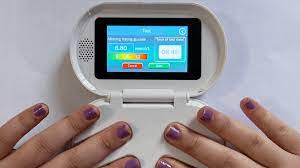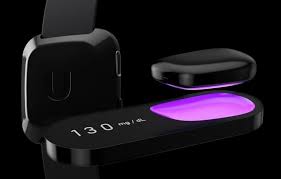A Game Changer for Diabetics! FreeStyle Libre
FreeStyle Libre Flash Glucose Monitoring System is a revolutionary glucose monitoring concept that provides greater data and convenience than blood glucose testing. Moreover, it is more affordable than CGM (Continous Glucose Monitors). Abbot FreeStyle Libre is a bloodless glucose meter that provides instant glucose readings by simply scanning a sensor instead of pricking your finger! This is great news for the Diabetes Community patiently waiting for these developments.
Non-Invasive Glucose Meter: How does it work?

The sensor is the size of a one-dollar coin and it remains in place for 14 days. Additionally, it’s factory calibrated and it will begin reading glucose and relaying data one hour after putting it on the upper arm.
The device is approved for use except in three cases where the normal finger-stick is recommended; when glucose changes rapidly, when hypoglycemic, and when your symptoms don’t match the readings provided by the system.
Most people who participated in patient trials of the devices rated the application of the fiber sensor as painless or less painless compared to traditional CGM (continuous glucose monitor). Moreover, the insertion process is very simple and it does not require any training. The insertion process takes about 15 seconds and it can be done even with one hand.
Using the FreeStyle Libre Flash Glucose Monitoring System
Take the touchscreen reader and hold it near (within an inch) the round sensor disc, and wait for the reader to beep. You will get your real-time glucose value in less than a second and you can also see your glucose trend arrow and a trend graph that shows the last 8 hours of data. You can also download reports from your reader device to your MAC or any other PC-compatible software.
Therefore, besides getting glucose readings as you would with the conventional blood glucose meters, you can also see whether your glucose levels have started going down, up, or are unstable.
Although the upper arm might seem like an annoying and very noticeable location, the round sensor is conveniently small and light, so you’ll soon forget that you’re even wearing it. The sensor comes with a strong adhesive in order to ensure that it stays intact on your skin for the entire 14-day period. Despite the activity you engage in, FreeStyle libre will not require any additional taping. However, Abbott is actively pursuing approval for various alternate wear locations that are more discreet (e.g., thigh, stomach).
How do you scan the sensor disc to obtain data?
Unlike continuous glucose monitors (CGM), the device must be scanned using the reader to obtain data (real-time value, trend, and graph,) because it does not continuously send real-time data to the touchscreen reader. The sensor stores 8 hours of data at a time with the values being taken every minute.
The FreeStyle Libre Flash Glucose Monitoring System has an outstanding scanning process that takes an average of two seconds. You simply need to touch the button on the screen reader to turn it on and bring up the sensor menu.

From there, hold the reader an inch from the sensor to obtain the real-time glucose value, trend, and past 8 hours of glucose data. The data is displayed on a clear and simple line graph.
Scanning takes 1 to 2 seconds and works through several layers of regular clothing. This allows for excellent flexibility and discretion. On the other hand, you can tag scans such as exercise, insulin carbs, and customizable options right from the home screen.
Scanning the sensor patch is associated with a certain cool factor, psychological pleasure, and fun quality. Additionally, the scans are accompanied by an inspiring ‘ding’ sound that is followed by the immediate display of data on your reader.
This will help you beat and forget the hassles associated with traditional blood glucose tests. This is largely because there is no cost associated with additional glucose scans and there is no limit to the number of scans you can take.
When will the Freestyle Libre be available in the US?
FreeStyle Libre Flash (real-time) Glucose Monitoring System version is currently available in most European countries and in Australia where it was approved by the Therapeutic Goods Administration (TGA) early this year (February 2016). However, it’s not clear when FreeStyle libre will launch in the United States. Since Abbot has not yet submitted the device to the FDA, it likely won’t be available until 2017 or even later. However, the FreeStyle Libre pro is hoping to get approval from the FDA anytime now – since it has been under review by the FDA since 2015.
Bookmark this site, to return for regular updates on the Bloodless Glucose Meter.
FreeStyle Libre Pro Now HAS FDA APPROVAL – IN THE US – READ MORE HERE!









